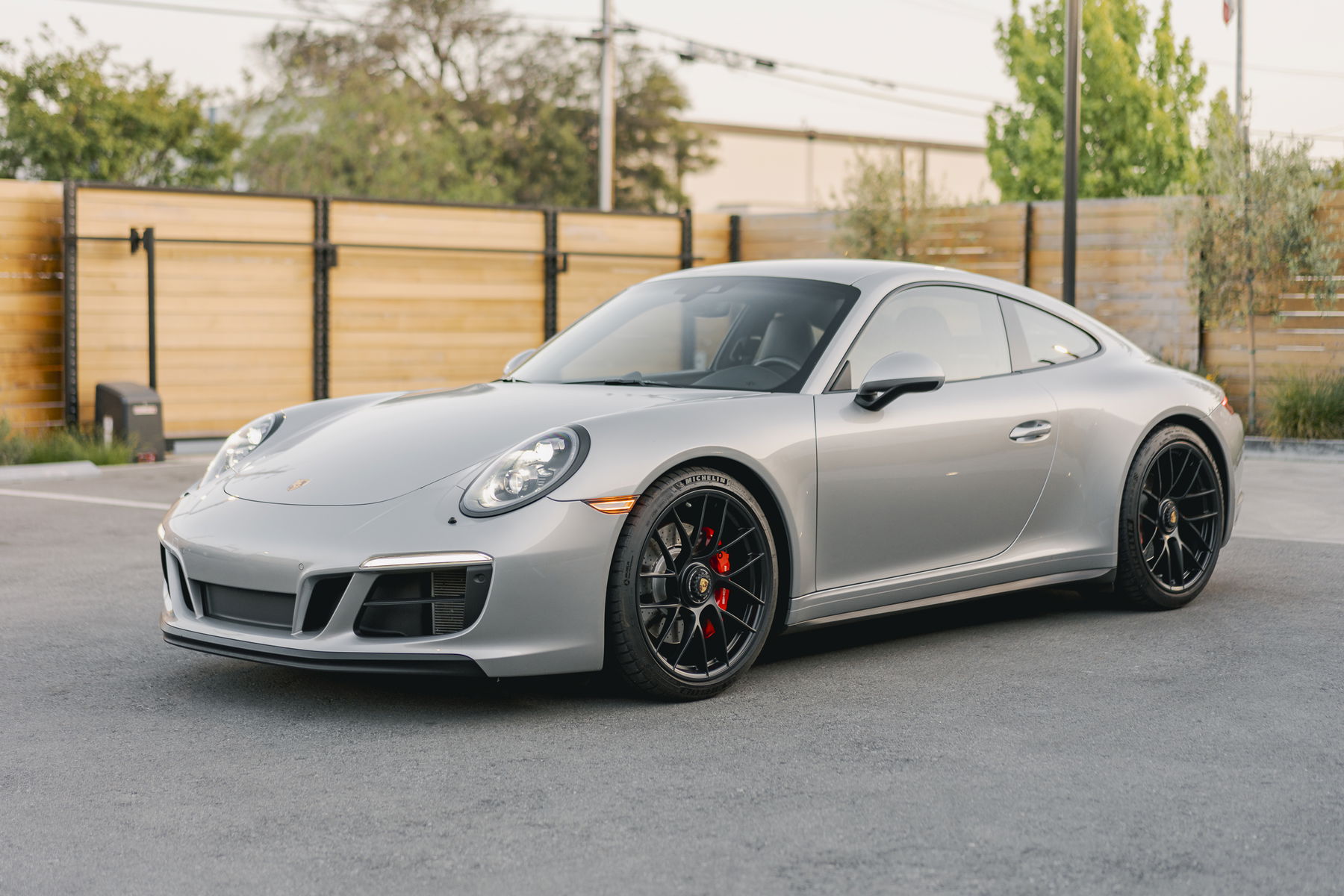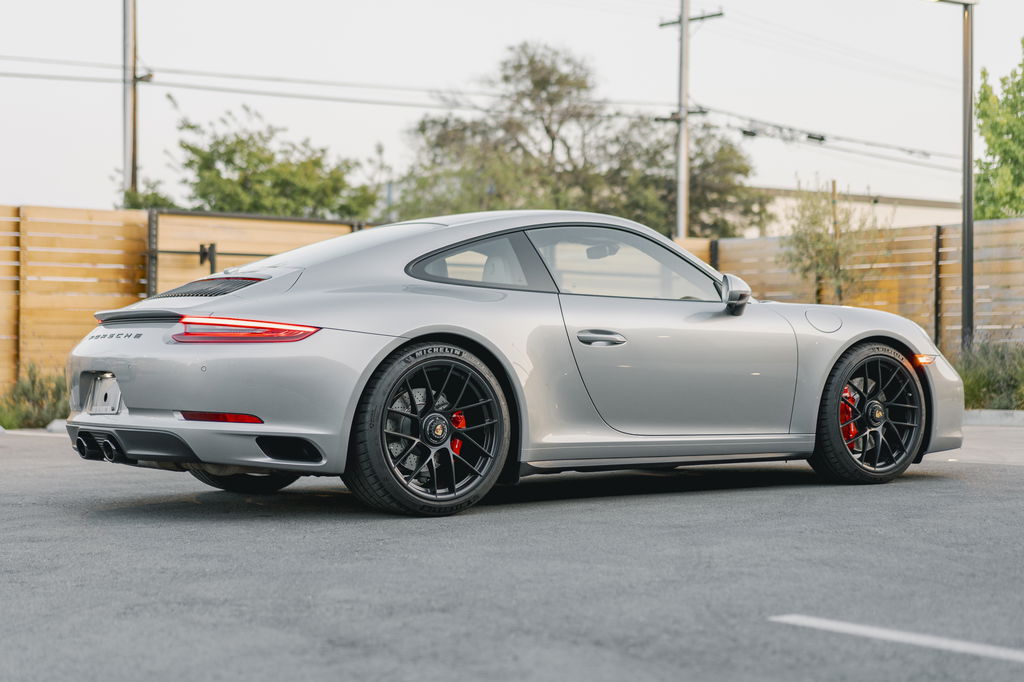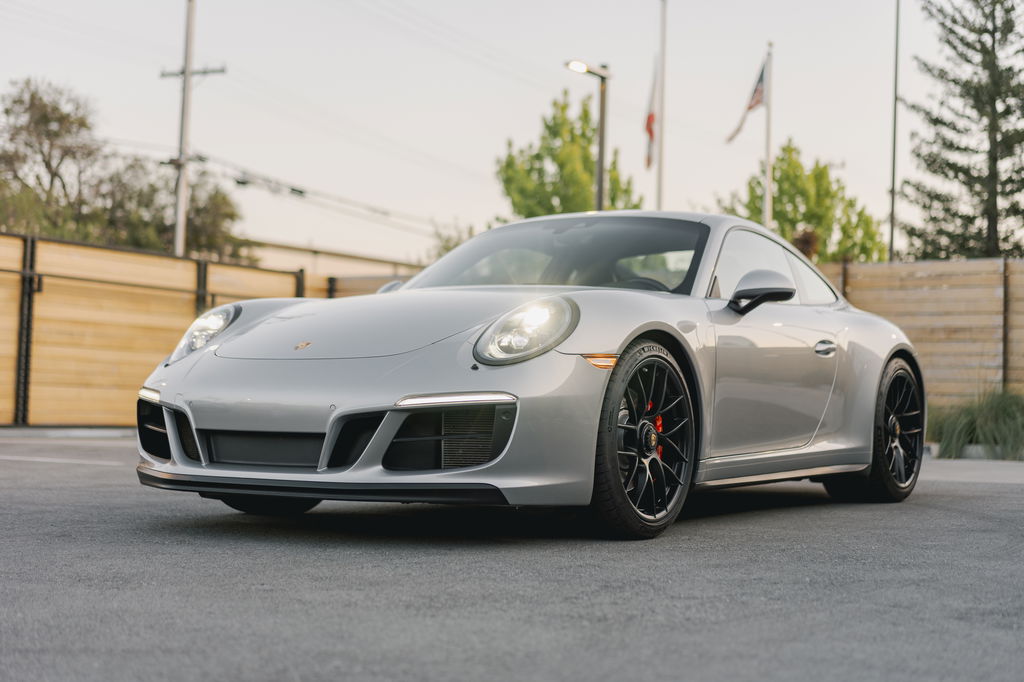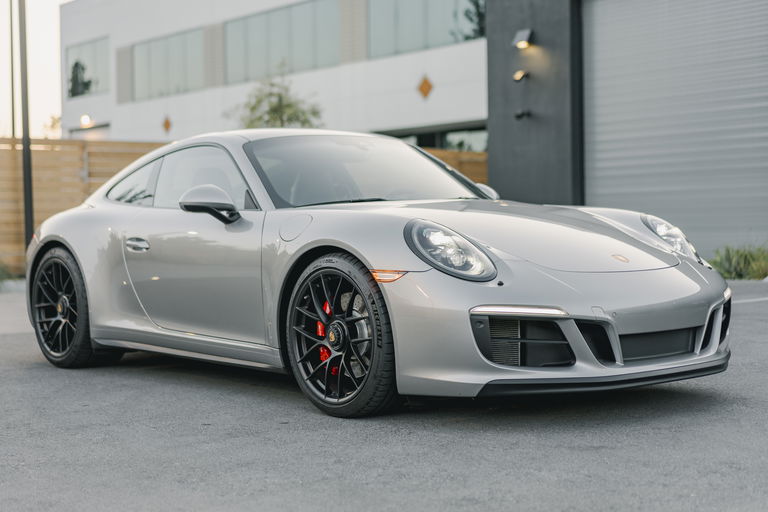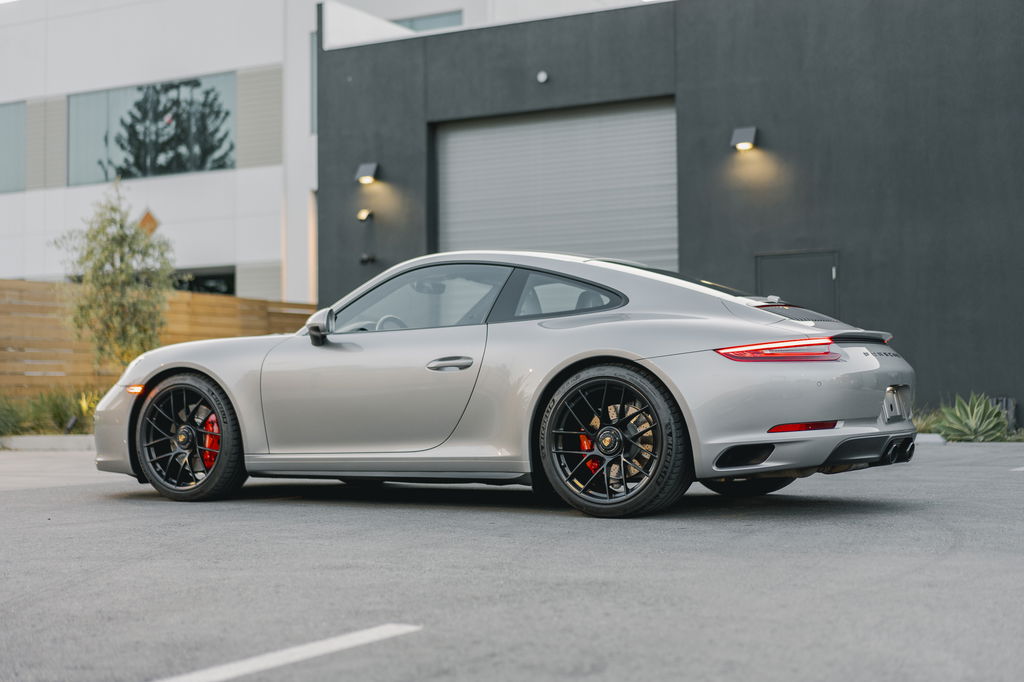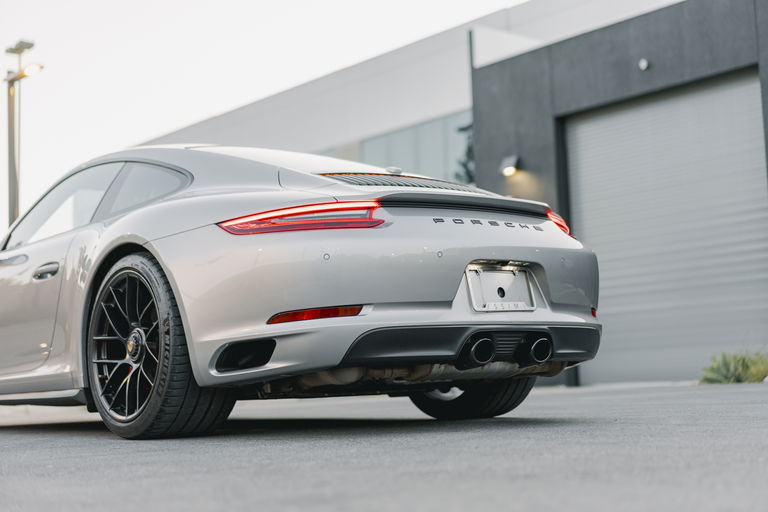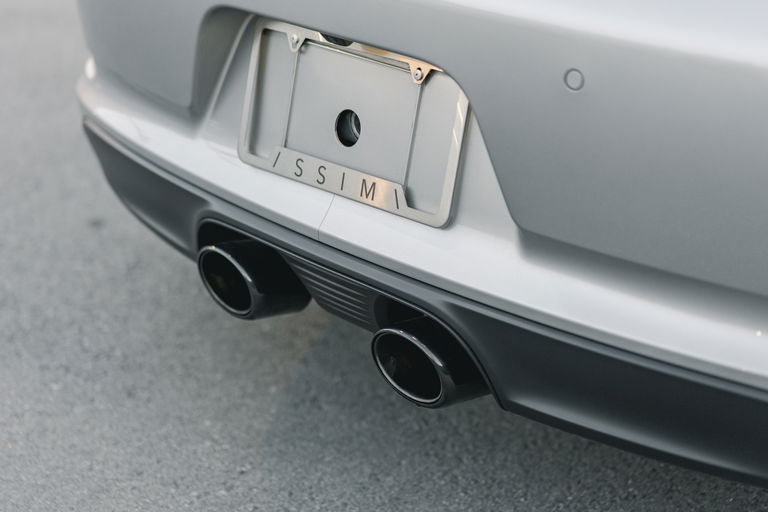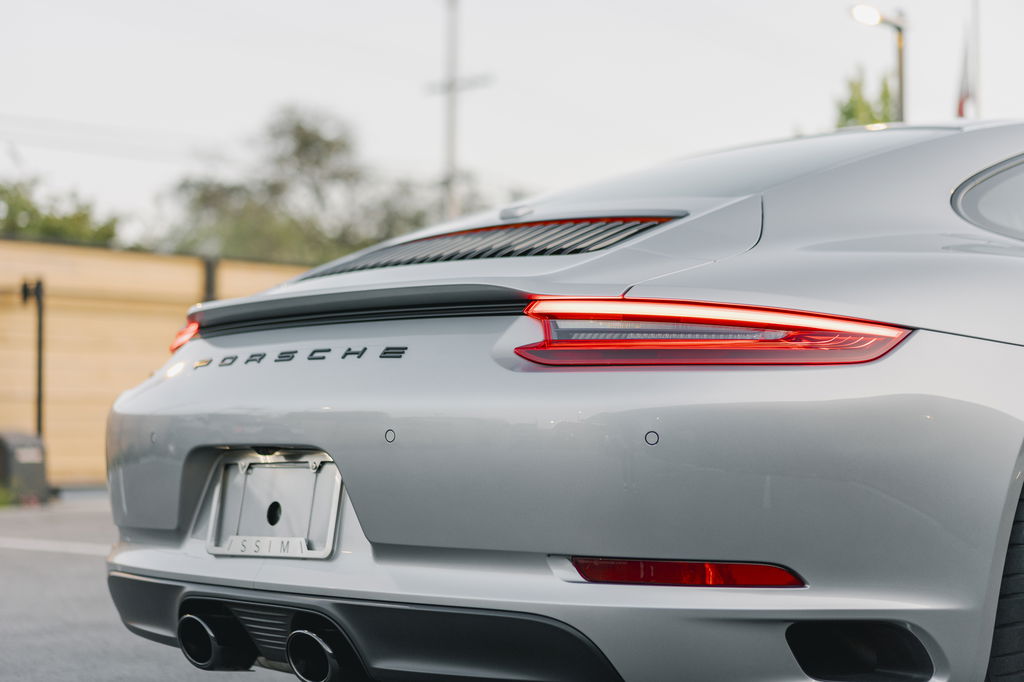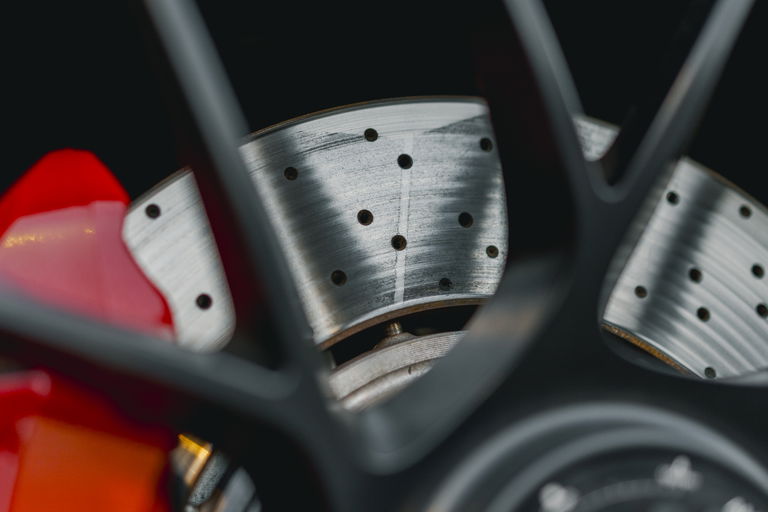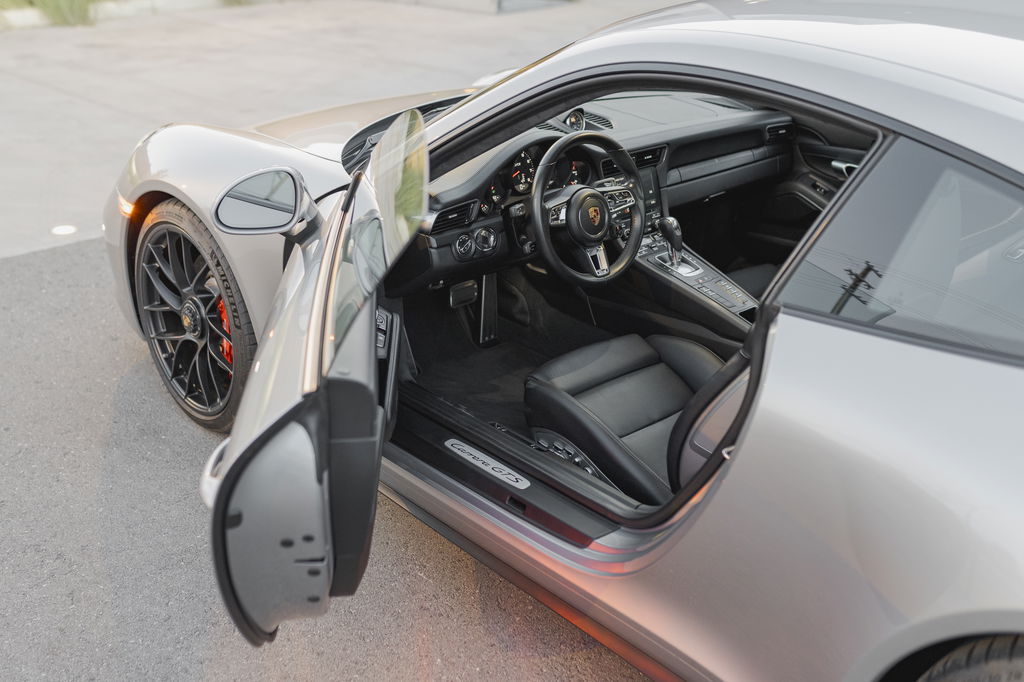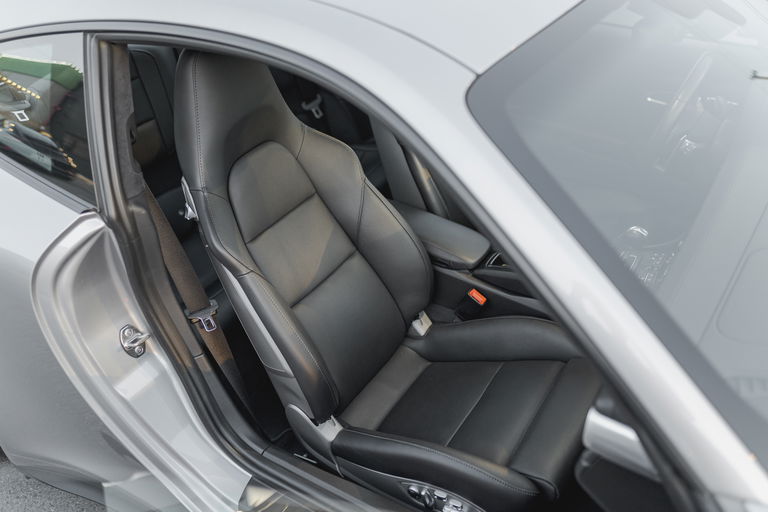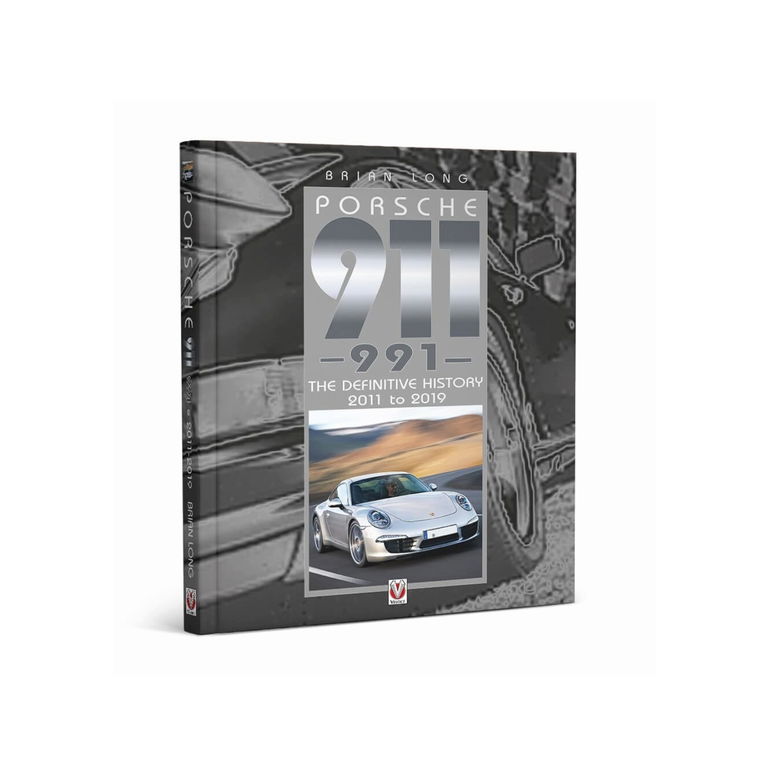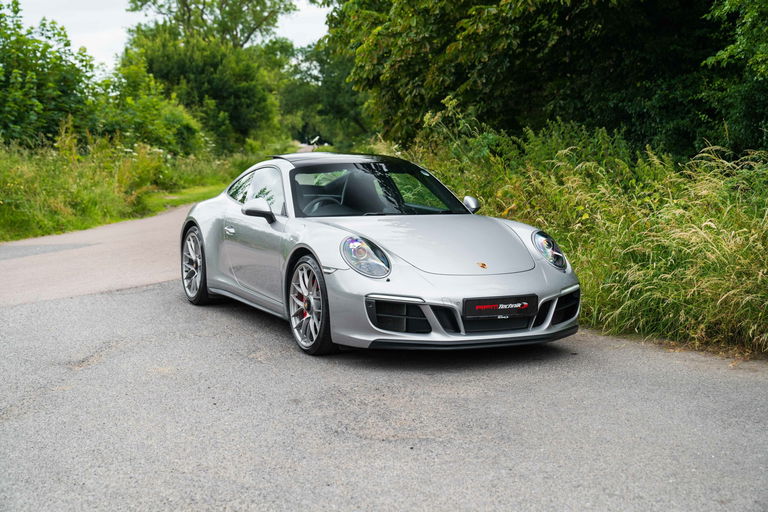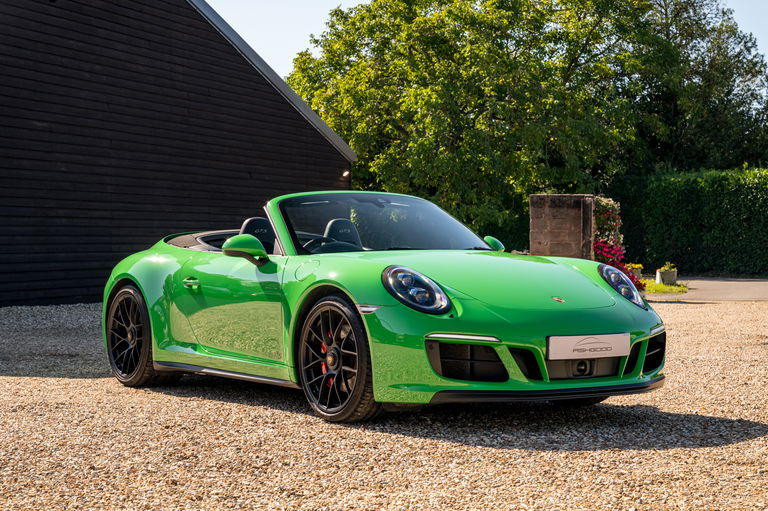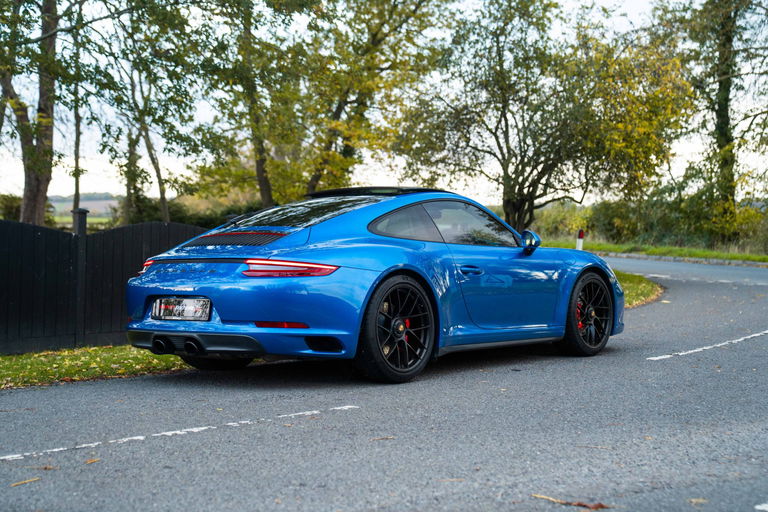On this car, satin black split-spoke wheels sit in front of a set of outstanding-looking red brake calipers.
The black leather interior is exactly what you would hope for in a 911, simple design, yet with every feature you could want in a modern car. As the GTS is intended as the ultimate enthusiast daily driver, it is fitted with a lot of great features like 18-way power sport seats, Bose premium surround sound, and a heated multi-function steering wheel. The black leather seats are wrapped in perforated leather which offers both heating and ventilation, and the Panamera-inspired center stack houses a simple-to-use MMI screen, leather-wrapped PDK selector, and buttons to control the suspension, exhaust, front-end lift, and power rear wing.
Powering the Carrera GTS is a twin-turbocharged 3.0 liter flat-6, which is rated from Porsche as producing 444 horsepower and 406 lb-ft of torque. The previous Carrera GTS made 325 lb-ft of torque at 5,600 rpm, but now, thanks to those two turbos, peak torque for this car is achieved between 2,150 rpm and 5,000 rpm. This makes passing both in town and on the highway a breeze and gives a great shove in the back whenever you press the gas. This is paired to a 7-speed PDK gearbox, which sends power to the rear wheels.
The 991.2 generation Carrera GTS is an appealing option in the world of used 911s these days. Offering lots of performance in a comfortable, well-sized package- while retaining the slightly more classic interior than the 992 that came after it. This example is finished in great colors and has been well cared for since it was new, making it a great option-especially if you only have the space for a single car to do everything with.
In 2016, Porsche unveiled their updated 991.2 generation 911. This facelift of the classic 911 shape included both new front and rear fascias and a minor interior update- but what really grabbed headlines at the time was the standard turbocharged engine in every model except the GT3. Changed largely for emissions reasons, enthusiasts were hardly thrilled that the revvy, naturally aspirated flat-6 engines Porsche had built its name on were losing much of their character with the addition of turbochargers. It didn’t take long for people to get behind the wheel and realize that, in many ways, these turbocharged cars are far superior to the outgoing naturally aspirated 911s. With more power around town, easier passing on the highway and an engine that remains responsive even when the turbos aren’t spooled up, the 991.2 featured one of the most flexible engines in 911 history.
